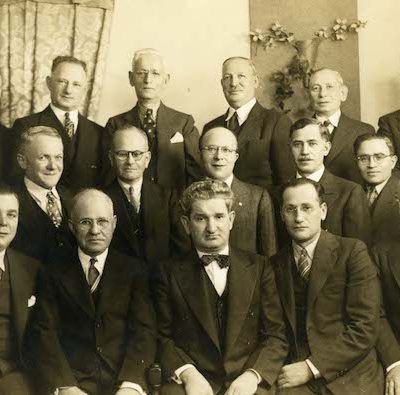
The Workmen’s Circle, or Arbiter Ring, was an international Jewish welfare organization associated closely with the labor movement. It was founded in New York City in 1900 and expanded to include branches all over the world, including a large presence in Western Pennsylvania. Workmen’s Circle came to Western Pennsylvania around 1904 with the formation of Branch 45 in Pittsburgh. At its peak in the early 20th century, Workmen’s Circle operated at least 11 branches in Western Pennsylvania—Branch 45, Branch 104, Branch 250, Branch 932, and Branch 975 in Pittsburgh, Branch 158 in Altoona, Branch 161 in Monessen, Branch 416 in Wheeling, W.V., Branch 431 in East Pittsburgh, Branch 617 in Beaver Falls, as well as a branch in New Kensington—and maintained some presence in other small towns throughout the region. Workmen’s Circle also operated at least two cemeteries in the region: the Branch 45 cemetery in Shaler Township and the joint Branch 932/Branch 975 cemetery in Reserve Township. The Jewish Cemetery and Burial Association currently oversees both cemeteries.
Eager to have a physical meeting place, the Workmen’s Circle sponsored the creation of the Labor Lyceum. The four-story building opened in 1916 on Miller Street in the Hill District. It served as the offices of the local Workmen’s Circle as well as many Jewish labor unions, Jewish political parties and Jewish cultural organizations. Propelled in part by the opening of the building, Pittsburgh was selected as the site of the national Workmen’s Circle convention in early 1918, bringing thousands to the city. The Labor Lyceum was the home for the Workmen’s Circle until the building was sold in 1930.
Although not a labor union itself, the Workmen’s Circle was supportive of the labor movement and was often involved in labor advocacy. It assisted efforts to organize Jewish stogy makers, garment workers, and bakers in the early 20th century. It also participated in labor activities involving non-Jews, including miners and steel workers. With the rise of Nazism in the early 1930s, the Workmen’s Circle became a supporter of the Pittsburgh Jewish Labor Committee, which organized against Nazi activities.
The Workmen’s Circle also organized fundraising efforts. It was a consistent contributor to Jewish War Relief efforts in Europe during World War I. In the early years of the Great Depression, the local Workmen’s Circle branches created a loan association.
The local presence of the Workmen’s Circle declined in the second half of the 20th century, consolidating down to Branch 45. The branch continued to support progressive causes while also maintaining its sponsorship of Yiddish cultural activities in the city. Workmen’s Circle Branch 45 officially disbanded in 1983.